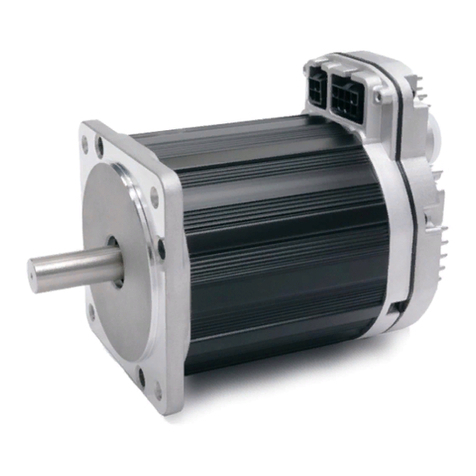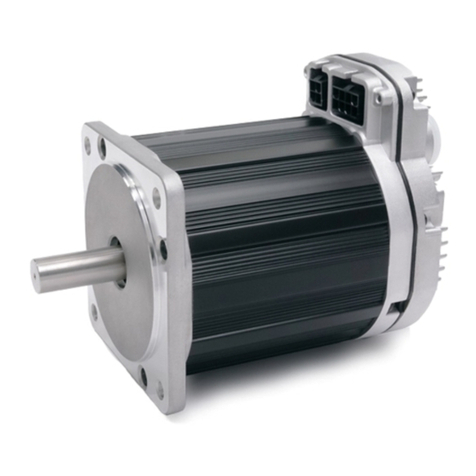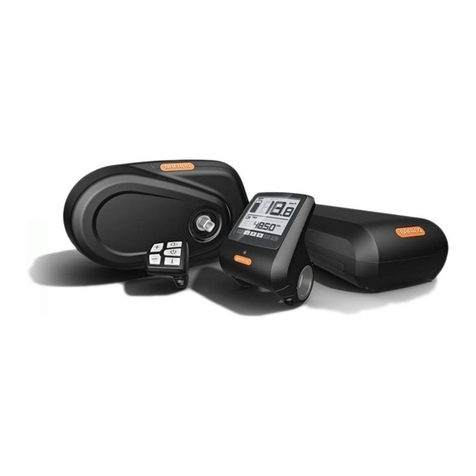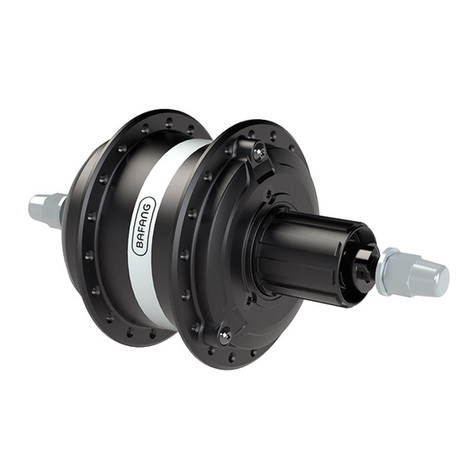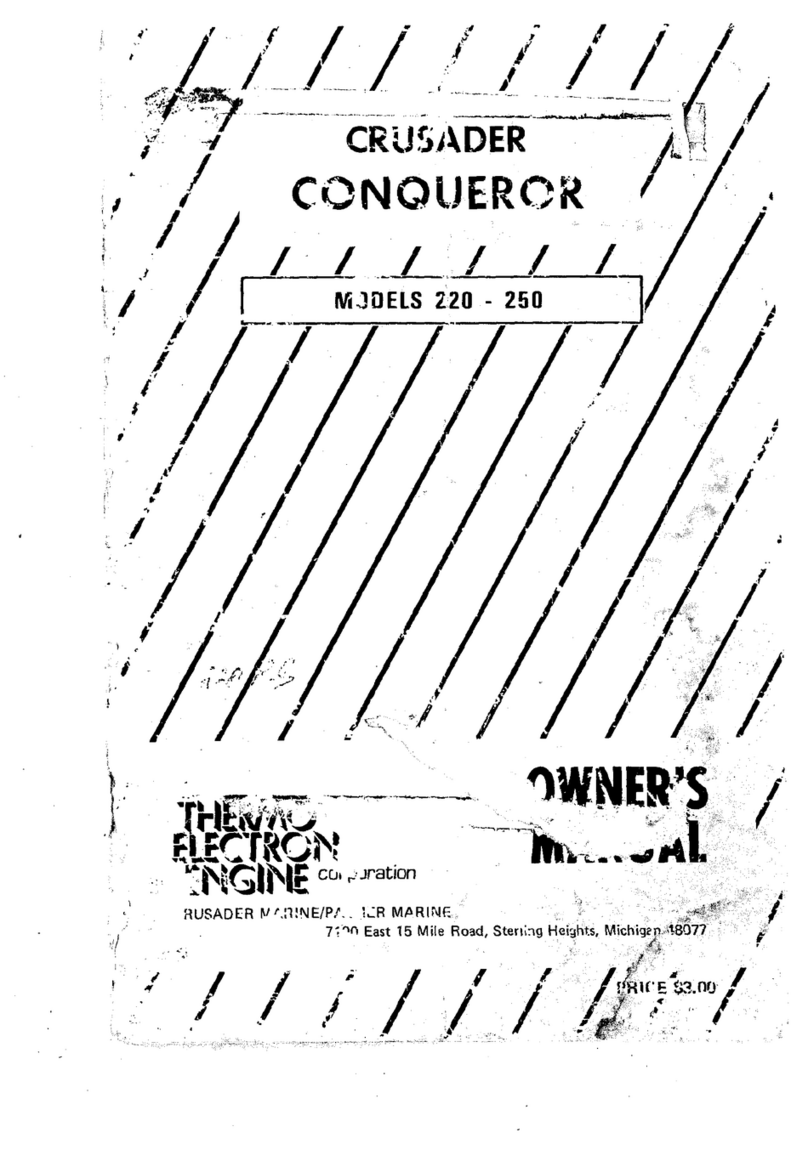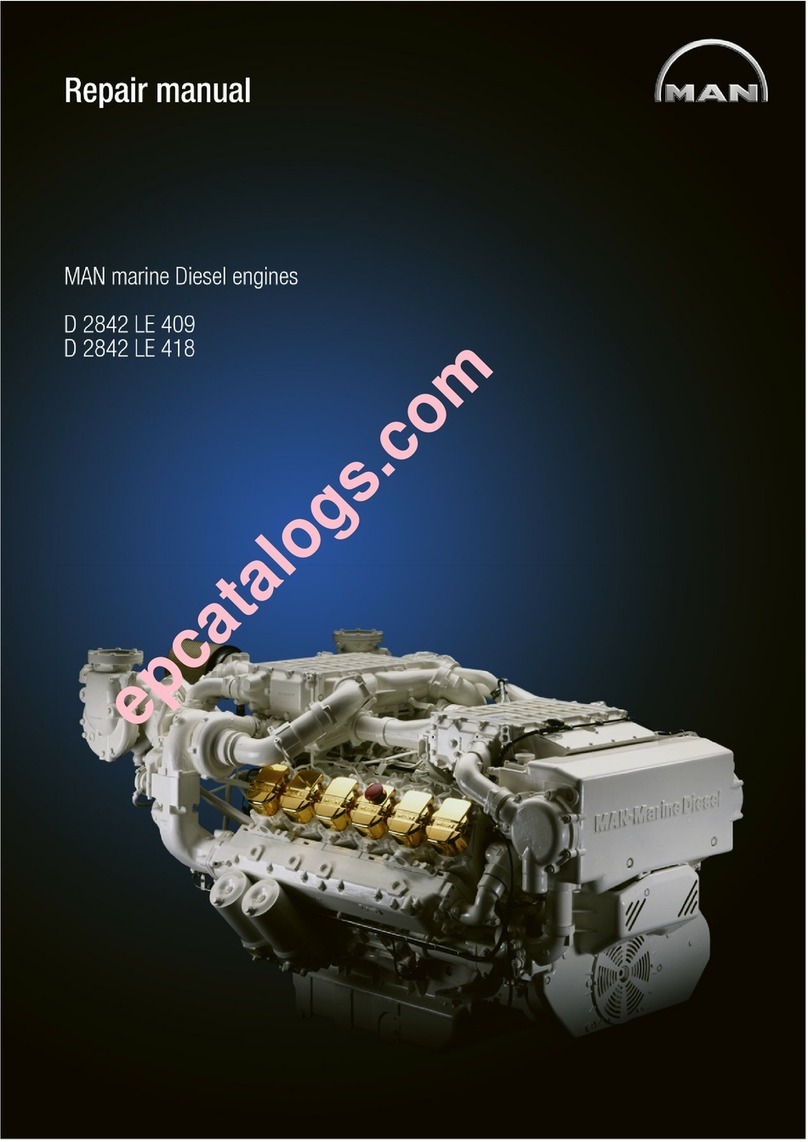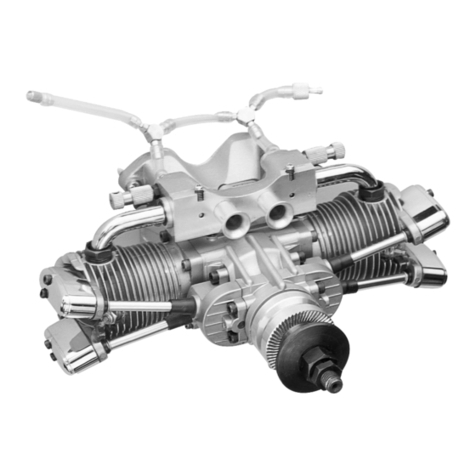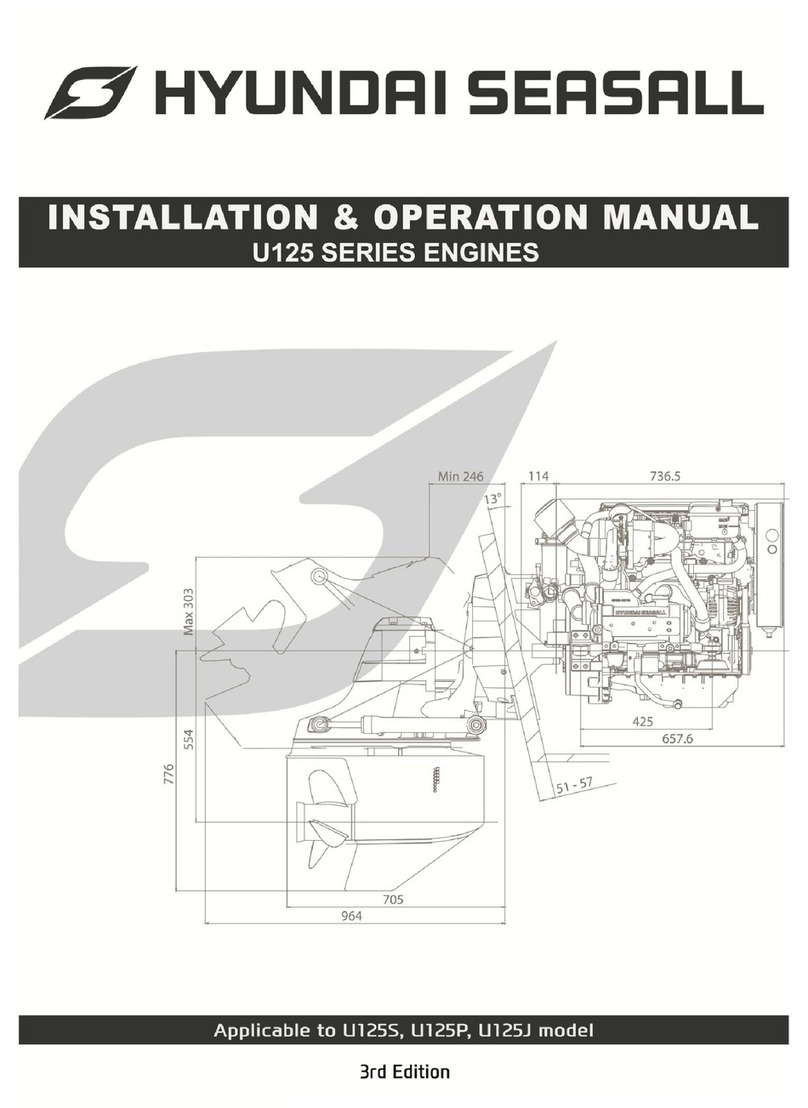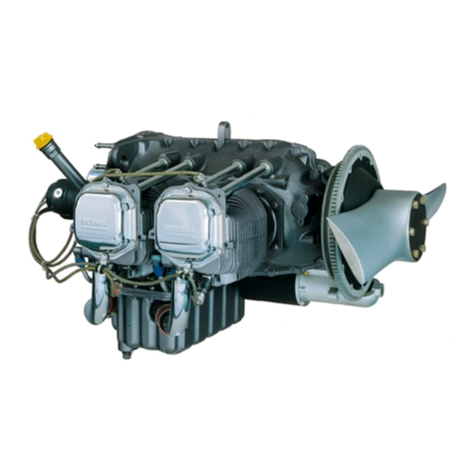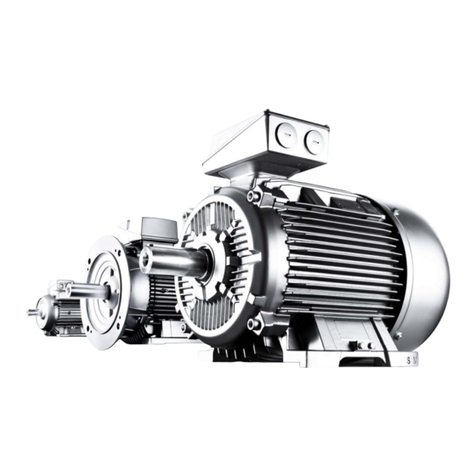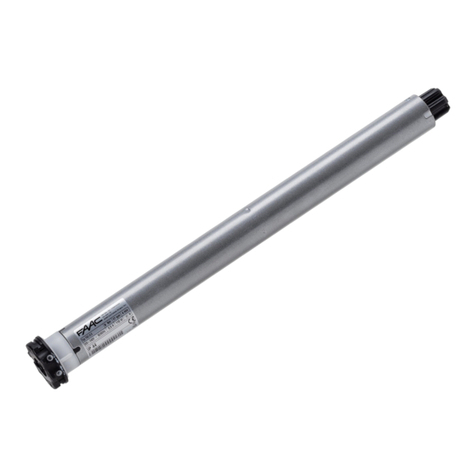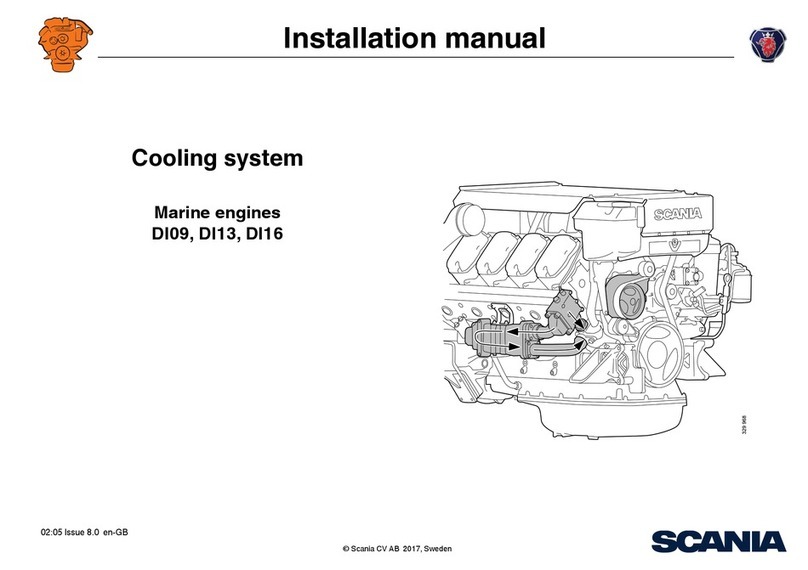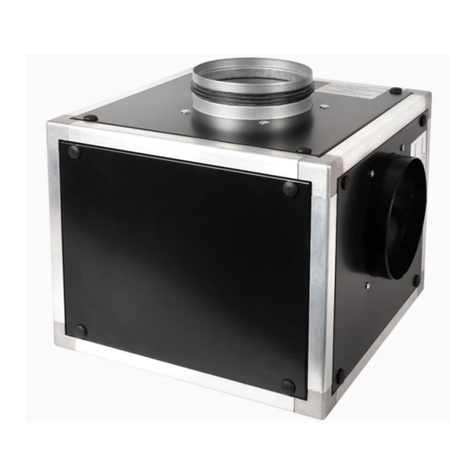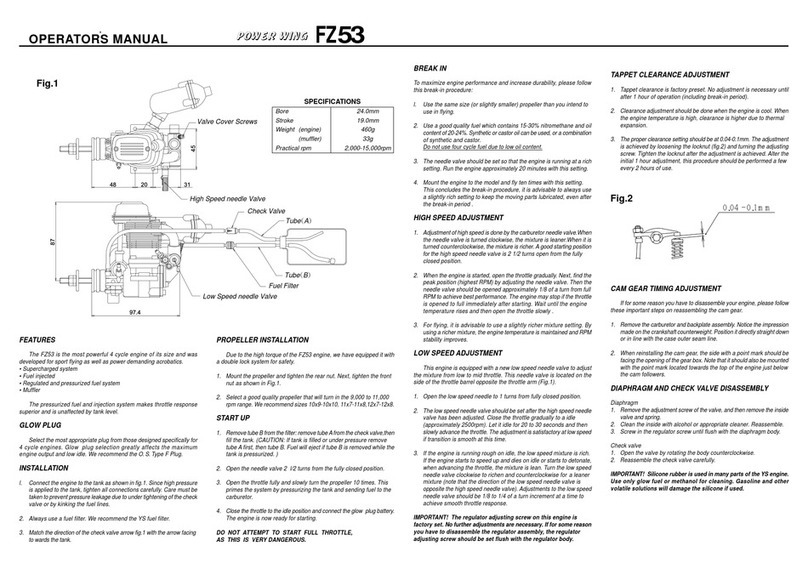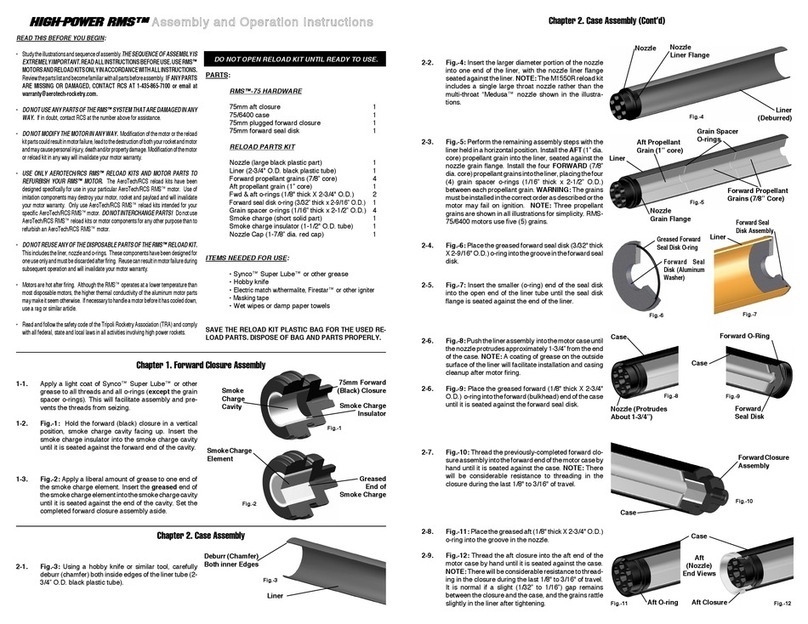Teknic Hudson 2311 User manual

Hudson Motor User Manual
For Hudson motors purchased at Teknic.com
Rev. 1.21 December 21, 2020
U
SER
M
ANUAL

Hudson Manual / Rev. 1.21 2
TEKNIC,INC. TEL.(585)784-7454
Table of Contents
Table of Contents.............................................................................................................. 2
Introduction ....................................................................................................................... 4
What's in This Document ....................................................................................................... 4
Information on the Web .........................................................................................................4
What are Hudson Motors?..................................................................................................... 5
Safety and Safe Handling Information ............................................................................ 6
General Precautionary Statement .........................................................................................6
Symbols Used in this Manual ................................................................................................6
Safe Handling Practices......................................................................................................... 7
Parts of a Hudson Motor................................................................................................... 8
Interconnect and Wiring................................................................................................... 9
Motor Connector Options.......................................................................................................9
Molex Mini-Fit Jr. Connector .................................................................................................. 9
Souriau Trim-Trio Connector ................................................................................................. 9
Connector Pinouts and Mating Parts ................................................................................... 10
Molex Mini-Fit Jr. Pinout ...................................................................................................... 10
Souriau Trim-Trio Pinout...................................................................................................... 11
Servo Drive Selection ..................................................................................................... 12
Drive Compatibility ............................................................................................................... 12
Supported Commutation Methods .......................................................................................12
Six-Step (Trapezoidal) Commutation ................................................................................... 12
Sine wave Commutation (Better) ......................................................................................... 13
Sine wave commutation with Vector Torque Control (Best)................................................. 13
Encoder and Commutation Signals............................................................................... 15
Encoder & Commutation Board Power Requirements ........................................................15
Encoder Signaling................................................................................................................ 16
Commutation (Hall) Signaling ..............................................................................................17
Commutation Signal and Motor Phase Relaionship............................................................. 17
Wiring Hudson Motors To Third-Party Drives ...................................................................... 18
Hudson Motor FAQ ......................................................................................................... 19
Q: Are Hudson Motors UL or CE certified? .......................................................................... 19
Q: How are Hudson Motors tested?..................................................................................... 19
Q: What type of servo drives will work with a Hudson Motor? ............................................. 19
Q: Which connector should I use? ....................................................................................... 19

Hudson Manual / Rev. 1.21 3
TEKNIC,INC. TEL.(585)784-7454
Q: Which motor winding option should I pick?......................................................................19
Q: Do I need the optional motor shaft seal? .........................................................................20
Q: How do I tune a Hudson motor? ......................................................................................20
Q: How can I change a motor’s “sense of direction”?...........................................................20
Q: Why is the motor warm during operation? .......................................................................21
Q: Where can I find 3D drawings of Hudson motors? ..........................................................21
Appendix A: Hudson Part Number Key.........................................................................22
Appendix B: NEMA 23 Specifications............................................................................23
Appendix C: NEMA 34 Specifications............................................................................24
Appendix D: Motor Dimensions .....................................................................................25
Hudson Motor 3D Models ....................................................................................................25
NEMA 34 Series Dimensions ..............................................................................................25
NEMA 23 Series Dimensions ..............................................................................................26
Appendix E: Motor Cables..............................................................................................27
Cable Drawings....................................................................................................................27
Golden Rules for Motor Cable Construction ........................................................................27
Cable Making Guidelines.....................................................................................................28

Hudson Manual / Rev. 1.21 4
TEKNIC,INC. TEL.(585)784-7454
Introduction
Thank you for choosing Hudson brushless DC servo motors for your motion
control project. Previously, Hudson motors were available for purchase by
high volume OEMs exclusively (i.e., companies buying hundreds or
thousands of units per year). In late 2020, Teknic opened up sales of Hudson
motors to the general public.
Hudson motors are among the most reliable, safe, and rugged servo motors
available, and our production staff are the guardians of Hudson quality. Each
production associate works diligently to build and test every Hudson motor to
an exacting standard, while our administrative staff works hard to ensure that
each of our customers has a great experience when they call in with a
question or problem.
What's in This Document
This document contains technical information on the Hudson family of
brushless DC servo motors, including:
•Wiring information
•Mechanical drawings
•Application tips
•Specifications
Information on the Web
Please visit Teknic's website for more information on the Hudson Family of
brushless servo motors: https://www.teknic.com/products/hudson-motors/

Hudson Manual / Rev. 1.21 5
TEKNIC,INC. TEL.(585)784-7454
What are Hudson Motors?
Hudson motors have been called (more or less correctly) all of the following:
•BLDC motors
•Three-phase, permanent magnet motors
•Synchronous, permanent magnet motors
•AC servomotors (AC because electronic commutation requires a
sinusoidal current to produce constant torque, not to be confused
with AC induction motors)
•DC servomotors (presumably to distinguish them from AC induction
motors)
•3-phase servomotors
Technically speaking, Hudson motors are:
Three-phase, synchronous, permanent magnet,
brushless servo motors.
Definitions
"Servo Motor" refers to a motor that uses one or more feedback devices
(encoder, Hall effect sensors, etc.) to control torque, velocity, and/or position
in a closed loop manner.
"Brushless", aside from the obvious, means the motor requires a drive
(amplifier) that supports electronic, non-contact commutation.
"Permanent Magnet" means that the motor has permanent magnets affixed
to the rotor (brush motors typically have permanent magnets affixed to the
stator).
"Synchronous" means that the rotational speed of the electromagnetic field
is the same as (i.e. synchronous with) the speed of the rotor. There is virtually
no “slip” between them.
“3-phase" means the motor has three separate stator windings connected
together in a delta or wye configuration.

Hudson Manual / Rev. 1.21 6
TEKNIC,INC. TEL.(585)784-7454
Safety and Safe Handling Information
General Precautionary Statement
Always follow appropriate safety precautions when installing and operating
motion control devices. Automated equipment should be designed to prevent
personnel from coming into contact with moving parts and electrical contacts
that could potentially cause injury or death.
Read all cautions, warnings and notes before attempting to operate or service
motion control devices. Follow all applicable codes and standards when using
this equipment. Failure to use this equipment as described may impair or
neutralize protections built into the product.
Symbols Used in this Manual
The following symbols and conventions are used on the equipment and in this
manual. Please read all equipment labels and manuals before using any
motion control device.
Caution, risk of danger
Identifies information about practices or circumstances that can lead to
equipment damage, personal injury, or loss of life.
Shock hazard
Identifies presence of hazardous electrical voltages and currents.
Protective earth terminal
Indicates points that must be connected to a reliable earth system for safety
compliance. Protective earth connections should never be omitted.
Earth ground terminal
Frame or chassis terminal (shield)
Direct current
Note
Identifies information that is critical for successful application and
understanding of the product.
Tip
Identifies additional information that may be helpful in supporting certain
applications.

Hudson Manual / Rev. 1.21 7
TEKNIC,INC. TEL.(585)784-7454
Safe Handling Practices
•Do not hammer pulleys, pinions, etc. onto the motor shaft.
•Do not wrench or pry pulleys, pinions, etc. off the motor shaft.
When removing accessories use a gear puller that pushes on the
center of the shaft (offsetting the applied force).
•Do not exceed the axial force limit (see table below) when
pulling on the shaft or bearing damage will occur.
•Do not pick up a Hudson motor by its pigtail. Note: Maximum
pigtail pull force is 7 lbs.
•Do not allow the Hudson pigtail to flex during routine operation. The
Hudson pigtail is not flex-rated. Use cable ties or other means to
immobilize the motor pigtail during operation.
•Do not install a Hudson motor such that pigtail is pulled taut (has a
constant tension applied to it). Allow for some slack in the pigtail
when securing the motor to your machine.
•When pushing an accessory onto the motor shaft, do not exceed
the axial force limit when pushing into the shaft (see table
below).
Shaft Axial Force Limits, N (Lb.)
Pushing into shaft Pulling out of shaft
NEMA 23 NEMA 34 NEMA 23 NEMA 34
Continuous, operating 90 (20.2) 115 (25.9) 22 (4.9) 32 (7.2)
Static, short term 224 (50.4) 360 (80.9) 112 (25.2) 135 (30.3)
Shock / Impact 45 (10.1) 68 (15.3) 45 (10.1) 68 (15.3)
•ESD Warning: Do not touch the bare pins on a Hudson motor
connector unless you are working in a static-safe environment.

Hudson Manual / Rev. 1.21 8
TEKNIC,INC. TEL.(585)784-7454
Parts of a Hudson Motor
eaw
12
34
5
6
7
8
9
10
11
12
13
14
15
16
17
18
19
20
Inside a Hudson Motor
1. 16 inch pigtail eliminates costly motor
cables in many applications.
2. Single cable, single connector pigtail
results in neater, lower cost installations.
3. Two connector choices: lower cost
automotive-style, and sealed, bayonet-
style.
4. All Hudson motors come with
connectors.
5. Zero-clearance pigtail allows bigger
motors to fit into smaller spaces.
6. Shatter-proof encoder disk eliminates
shock-induced failures.
7. Industry-standard encoder and
com mutation signals.
8. Low-profile encoder allows you to fit
motors into tighter spaces.
9. Precision brass balancing tabs for
smoother motion and less vibration.
10. Epoxy insulation layer allows the use of
higher operating voltages.
11. Compression-fit aluminum stator
housing channels heat out of the motor.
12. Sintered, nickel-plated, rare-earth
magnets generate maximum power.
13. Architectural-quality, anodized finish will
look great for years.
14. Oversized, permanently lubricated front
bearing extends bearing life.
15. Long-stroke, wave spring imparts
consistent bearing preload.
16. Optional high-performance shaft seal for
more protection against dirt and dust.
17. Smooth, radiused transition from
external shaft diameter results in a
stronger shaft.
18. Feather keyway allows easy assembly
(and the key can’t work its way out).
19. Helically skewed stator laminations
improve smoothness of motion.
20. Tightly formed and laced end-turns heat
more evenly for higher reliability and
longevity.
Hudson motor cutaway view

Hudson Manual / Rev. 1.21 9
TEKNIC,INC.PHONE (585)784-7454
Interconnect and Wiring
This section discusses Hudson motor interconnect topics, including the
following:
•Motor connector options
•Mating connector parts and pinout information
Motor Connector Options
Hudson motors are available in two connector options: Molex MiniFit Jr. (at
left below) and Souriau Trim-Trio, free hanging (at right).
Hudson motor connector options
Molex Mini-Fit Jr. Connector
The Molex Mini-Fit Jr. connector provides a gas tight link with four points of
contact. This low cost, rugged connector is rated at up to 10A continuous
current per circuit, and 600V. The connector includes a positive locking
mechanism, and fully isolated, low engagement-force terminals.
Use Molex Mini-Fit Jr. connectors when:
•Lower cost and high reliability is required
•The operating environment is relatively clean and dry (typical dust/dirt
is OK)
•Less than 10A of continuous current per phase is required
Souriau Trim-Trio Connector
The Souriau Trim-Trio bayonet-style connector is a keyed, sealed, positively
locking unit derived from the MIL-C 26482 specification.
Use Souriau Trim-Trio connectors when:
•The pollution level (at the connector) is higher (light spray, mists,
fumes, chips, etc.)
•A water resistant seal (at the connector) is required
•Higher current-carrying capacity (> 10A continuous) is required

Hudson Manual / Rev. 1.21 10
TEKNIC,INC.PHONE (585)784-7454
Connector Pinouts and Mating Parts
Molex Mini-Fit Jr. Pinout
12345678
910 11 12 13 14 15 16
WIRE ENTRY VIEW
Pin# AWG Color Signal Name Notes
1
16
TIN P DRAIN Drain wire for Phase Cable
2
326 GRN COMM S-T commutation (Hall) sensor
426 GRN/WHT COMM R-S commutation (Hall) sensor
526 GRY/WHT COMM T-R commutation (Hall) sensor
626 TIN E DRAIN drain wire for Logic Cable shield
726 BLK GND +5VDC ground (encoder/Hall board return)
826 BLU/WHT ENC A~ encoder out (A~)
9
16
BLK or WHT/BLK PHASE R MOTOR PHASE
10
16
RED or WHT/RED PHASE S MOTOR PHASE
11
16
WHT PHASE T MOTOR PHASE
12 26 RED +5VDC IN +5VDC input (encoder/Hall board power)
13 26 BRN ENC I encoder out (index)
14 26 ORN ENC B encoder out (B)
15 26 BLU ENC A encoder out (A)
16 26 ORN/WHT ENC B~ encoder out (B~)
Mating Parts
Molex / 39-00-0049 (loose) -0048 (reel)
Molex / 39-01-2166
Crimp tool, 22-28AWG
Terminal, male, 16 AWG (motor phases)
Terminal, male, 24 AWG (logic signals)
Connector Housing, panel mount
Pigtail Pinout Table (Molex, Minifit Jr.)
Part Description
Extraction Tool
Molex / 11-03-0044
Mfg. / Part Number
Crimp tool, 16AWG
Molex / 2002182200
Molex / 11-01-0198
Molex / 39-00-0082 (loose) -0081 (reel)
NO CONNECT

Hudson Manual / Rev. 1.21 11
TEKNIC,INC.PHONE (585)784-7454
Souriau Trim-Trio Pinout
A
B
R
V
U
T
S
PC
D
E
F
G
H
J
K
L
M
N
Front View
A
B
R
V
U
T
S
P
C
D
E
FG
H
J
K
L
M
N
Wire Entry View
Pin# AWG Color Signal Name Notes
A
B
16
BLK or WHT/BLK PHASE R MOTOR PHASE
C
16
RED or WHT/RED PHASE S MOTOR PHASE
D
16
WHT PHASE T MOTOR PHASE
E
F26 ORN/WHT ENC B~ encoder out (B~)
G26 GRN COMM S-T commutation (Hall) sensor
H26 GRN/WHT COMM R-S commutation (Hall) sensor
J26 BLU ENC A encoder out (A)
K26 BLU/WHT ENC A~ encoder out (A~)
L26 GRY/WHT COMM T-R commutation (Hall) sensor
M26 TIN E DRAIN Drain wire for Logic Cable shield
N
P
R
16
TIN P DRAIN Drain wire for Phase Cable
S26 BLK GND +5VDC return
T26 RED +5VDC IN +5VDC input (encoder/hall power)
U26 BRN ENC I encoder out (index)
V26 ORN ENC B encoder out (B)
Terminal, female, 16 AWG (motor phases)
Souriau / RC16M23T
Backshell / Clamp
Souriau / UTG16AC
Connector Housing, for panel-mount pigtail
Souriau / UTG616-19S
Terminal, female, 24 AWG (logic signals)
Souriau / SC24M1TK6
Pigtail Pinout Table (Souriau, Trim Trio Connector)
Mating Parts
Part Description
Mfg. / Part Number
Connector Housing, w/ flange (for free-hanging pigtail)
Souriau / UTG016-19S
NO CONNECT
NO CONNECT
NO CONNECT
NO CONNECT

Hudson Manual / Rev. 1.21 12
TEKNIC,INC.PHONE (585)784-7454
Servo Drive Selection
Drive Compatibility
Servo drives intended for use with a Hudson motor must have the capabilities
listed below.
Supported Methods of Commutation (see section below for details)
•Six-Step (trapezoidal)
•Sine Wave
•Sine Wave with Vector Torque Control
Hudson motors have
•5VDC differential encoder signals
•5VDC, 120°optical commutation sensors (analogous to Hall effect
sensors)
•8 poles
•4 electrical cycles per revolution
Supported Commutation Methods
Each Hudson motor has a precision optical encoder disk with 120º optical
commutation sensors (analogous to Hall effect sensors). During assembly the
disk is precisely locked into position such that the commutation tracks line up
with the rotor in a known orientation.
Six-Step (Trapezoidal) Commutation
Note: Six-step commutation (aka "trapezoidal commutation") can be used
with Hudson motors though it is generally not preferred for high precision, low
speed applications due to higher torque ripple and lower operating efficiency.
Six-step is often used in cost-sensitive, lower precision applications, and for
high speed applications where the mechanical system and motor combine to
have sufficient inertia to minimize the effect of torque ripple.
During six-step commutation, the servo drive interprets the rotating
commutation sensor codes from the motor to determine relative rotor to stator
position and uses this information to sequence and time the switching of
current into the motor phases.
Step# Commutation Sensor State
3 channels, 120º separation Current Flow
1 1 0 1 From phase R to phase S
2 1 0 0 From phase R to phase T
3 1 1 0 From phase S to phase T
4 0 1 0 From phase S to phase R
5 0 1 1 From phase T to phase R
6 0 0 1 From phase T to phase S

Hudson Manual / Rev. 1.21 13
TEKNIC,INC.PHONE (585)784-7454
During six-step commutation, current flows in only two phases at a time (the
odd phase is always off). Example: In Step #1 above, when the commutation
sensors read binary (1 0 1) the drive sends current through Phases R and S,
while Phase T remains off. Six-step drives are less complicated in several
ways. In fact, because there is only one current path at any time, only one
loop is required to control motor phase current.
It is useful to understand that the commutation “code” changes state six times
per electrical cycle1, and thus provides a less precise fix on rotor position than
a typical sine wave drive with encoder-based commutation. While this may be
sufficient for less demanding motion applications, a high resolution feedback
device—such as an encoder—is a better choice for high precision positioning
tasks.
Pros and Cons of Six-Step Commutation
Pro: Lower cost of implementation (relatively simple devices)
Con: High torque ripple
Con: No torque control loop, though does have a current loop
Con: Lower torque efficiency (at high speeds)
Sine wave Commutation (Better)
Sine wave commutation is generally better suited to midrange applications
where greater precision of control over position, velocity and/or current is
required.
Most sine wave drives use the commutation sensors to initialize the
commutation process. First, the commutation code is read from the motor to
establish the initial rotor vs. stator position. Then the drive applies current to
the motor windings to achieve the desired relationship between the
permanent and electromagnetic fields. After this relationship is established,
the electromagnetic vector is “locked” to the encoder position, and
commutation continues based on encoder feedback (and not on the Halls).
Though more efficient than six-step drives, sine wave drives run open loop
with respect to torque control. While the current in each motor phase is
individually servo controlled, the actual torque produced at the shaft is not. In
most sine wave drives, torque errors are only corrected indirectly—after they
have resulted in velocity and position errors. This generally means sine wave
drives operate with a wider positioning error band than sine wave drives with
true vector torque control (see next topic).
Sine wave commutation with Vector Torque Control (Best)
Sine wave drives with Vector Torque Control (VTC) are often the drive of
choice for high precision, high throughput positioning and contouring
applications. A sine wave VTC drive is wired, and operates, in basically the
same way as a sine wave drive without VTC. The key difference is how
torque is controlled. While most sine wave drives servo control only the
1Note: Hudson motors are 8-pole motors that have four electrical cycles per mechanical
revolution. This means that Hudson commutation sensors transition (6 states x 4
electrical cycles) 24 times per motor revolution.

Hudson Manual / Rev. 1.21 14
TEKNIC,INC.PHONE (585)784-7454
individual motor phase currents, VTC drives servo control the actual torque
produced at the motor shaft.
The drive simultaneously takes calibrated current measurements from all
motor phases, combines this data with information about rotor position, phase
resistance, inductance and back-EMF, and then applies advanced vector
mathematics to calculate the exact torque being produced at the shaft. This
tight torque feedback loop allows for very rapid corrections in torque error,
resulting in superior dynamic tracking performance.

Hudson Manual / Rev. 1.21 15
TEKNIC,INC.PHONE (585)784-7454
Encoder and Commutation Signals
Hudson motors have differential encoder outputs and single-ended
commutation (Hall) outputs.
Encoder and commutation tracks are optically read from the Hudson encoder
disk and then translated to driven signals present at the motor connector.
Encoder Track
Glass encoder
At left is a Hudson encoder disk. At right is a glass encoder disk on a motor that
was dropped on the floor.
Encoder & Commutation Board Power Requirements
Hudson motors require a 5VDC supply voltage to power the combined
encoder & commutation sensor board.
Input voltage (at motor connector) 4.5-5.5VDC (6.0VDC absolute max.)
Current draw, loaded* 180mA @ 5VDC
Current draw, unloaded 125mA @ 5VDC
*This value is based on a 200 ohm test load.

Hudson Manual / Rev. 1.21 16
TEKNIC,INC.PHONE (585)784-7454
Encoder Signaling
Differential encoders on a Hudson motor have balanced, driven outputs
intended to drive terminated, twisted pair transmission lines. Differential
signals offer excellent common-mode noise immunity and support longer
cable runs than single-ended signaling.
Technical Note
The differential encoder output is driven from an AM26C31 differential line
driver optimized for 120Ωtransmission lines. Refer to the AM26C31 data
sheet for complete specifications.
Differential encoder
signal
complement
To Servo Drive
74HC14
AM26C31
24Ω
ENC I
ENC A
ENC A
ENC B
ENC B
encoder disk
Motor
read head
(one pulse per revolution)
Differential encoder output
Differential encoder signals provide excellent common mode noise immunity,
especially over longer transmission ranges (up to 100 feet). In many
applications, such as plasma cutting, differential encoder signals are superior
to single-ended signals.

Hudson Manual / Rev. 1.21 17
TEKNIC,INC.PHONE (585)784-7454
Commutation (Hall) Signaling
The optical commutation sensors are 5V TTL, totem pole driven outputs with
10mA maximum current.
Commutation Signal and Motor Phase Relaionship
The diagram below illustrates the relationship between commutation (Hall)
outputs and motor phases for properly wired Hudson motors. Refer to this
diagram when wiring third-party servo drives to Hudson motors. When using
the diagram below, bear in mind the following:
•The waveforms below apply to sine wave drives that can process
120° commutation sensor (Hall) signals and use encoder-based
commutation. Note: Six-step drives would produce a different back
EMF signature than shown below.
•The drive must be wired to count up as the motor shaft is turned
CCW (looking into the shaft).
•The commutation sequence shown in gray below is read from right
to left. When spinning the shaft CCW, a properly wired motor should
report commutation codes in the following sequence: 100, 101, 001,
011, 010, 110.
0° 30° 60° 90° 120° 150° 180° 210° 240° 270° 300° 330° 360°
0° 30° 60° 90° 120° 150° 180° 210° 240° 270° 300° 330° 360°
PHASE T
PHASE R
PHASE S
Back EMF
waveforms
Commutation sensor
(Hall effect) signals
COMM. T-R
COMM. S-T
COMM. R-S
110 010 011 001 101 100
(6) (2) (3) (1) (5) (4)
(referenced to phase R)
(referenced to phase S)
(referenced to phase T)
(Decimal)
Binary
Commutation
Sensor Codes
(
read rIght to left
for CCW rotation
)
Note: Motor phase zero-crossings must line up
with commutation sensor transitions as shown
motor phase
zero crossing
commutation
sensor transition
The above diagram shows the back-EMF waveforms you’d see if the motor
shaft was spun counterclockwise (looking into the shaft) with an oscilloscope
probe attached to the phase of interest and the ground clip attached to the
reference phase. The lower part of the diagram shows how the commutation
signals would appear on an oscilloscope when probed signal to ground.

Hudson Manual / Rev. 1.21 18
TEKNIC,INC.PHONE (585)784-7454
The motor is phased correctly when the zero-crossings of motor phases line
up with the transition points of the commutation sensor signals as shown in
the previous illustration.
Wiring Hudson Motors To Third-Party Drives
When wiring a Hudson to a third-party drive, start with a motor that is wired to
show positive encoder counts when spun CCW (viewed looking into the motor
shaft). If this is not the case, swap encoder signals A and B (for single-ended
encoders) or A and A~ (for differential encoders).
Important: the motor phases must align with their associated commutation
signal as follows (refer to phase diagram on previous page):
•Phase T and Comm. T-R
•Phase R and Comm. R-S
•Phase S and Comm. S-T
Note: Within the motion control industry, there is no standardized convention
for the labeling of encoder signals, motor phases or commutation (Hall)
signals. Consult the servo drive manufacturer for questions regarding
the wiring of encoder outputs, commutation (Hall) outputs and motor
phases.

Hudson Manual / Rev. 1.21 19
TEKNIC,INC.PHONE (585)784-7454
Hudson Motor FAQ
Q: Are Hudson Motors UL or CE certified?
A: Yes, both.
Q: How are Hudson Motors tested?
A: Each Hudson motor is rigorously tested before shipment. The tests
include:
•100% HASS tested (Highly Accelerated Stress Screening)
•Mechanical compliance tests
•Encoder integrity test
•Commutation sensor accuracy test
•Full electrical compliance test
•Full functional test
Q: What type of servo drives will work with a Hudson Motor?
A: Hudson servo motors are 3-phase, synchronous, permanent magnet,
brushless, servo motors with an incremental encoder that outputs standard
differential encoder signals and standard 120º optical commutation (Hall)
sensor signals. Hudson BLDC motors will work with the following drive types:
•Six-step (trapezoidal)
•Sine wave
•Sine wave with vector torque control
Q: Which connector should I use?
A: A Hudson motor can be fitted with either a Molex MiniFit Jr. or Souriau
Trim-Trio connector.
For most applications, the Molex MiniFit Jr. connector is a good choice. Use
this type of connector in relatively clean, dry environments (general dust is
OK), and when 10 amps or less motor phase current will be applied.
Consider using Souriau Trim-Trio connectors where the connector may be
subject to water spray, mist or fumes, or when more than 10 amps per phase
may be present. Note: Trim-Trio connectors have a longer lead time.
Q: Which motor winding option should I pick?
A: Hudson motors are available in Series or Parallel winding configurations.
Select the winding that best matches your torque and speed requirements.
Torque-speed graphs are available in the Hudson motor section of our
website.

Hudson Manual / Rev. 1.21 20
TEKNIC,INC.PHONE (585)784-7454
Q: Do I need the optional motor shaft seal?
A: For extra protection beyond the standard double-sealed ball bearings, an
optional dynamic shaft seal is available. The seal is appropriate when the
motor face (side with the shaft comes out) will be exposed to potentially
damaging particulate matter generated during machine operations.
Note: The shaft seal option is not available for 1/4" shaft NEMA 23 motors.
Q: How do I tune a Hudson motor?
A: Please consult the servo drive manufacturer for wiring and tuning
instructions.
Tip: Hudson servo motors have relatively fast electrical time constants. As a
result, they respond very rapidly to changes in winding current which allows
the motor to follow dynamic commands very quickly. If less aggressive servo
response is required for an application, it may be advisable to reduce the
drive's current or torque loop gains.
Q: How can I change a motor’s “sense of direction”?
A: Some drives may include firmware or software controls that allow you to
reverse motor shaft direction by changing a setting. Consult the servo drive
manufacturer for more information.
In some scenarios, you may need to reverse the motor’s sense of positive
and negative motion by modifying the motor cable. Assuming you have a
properly operating motor, except that direction of rotation is reversed,
swapping the following signals will change the direction of rotation:
Motors with Differential Encoders
•Swap Phase S with Phase T
•Swap Comm R-S with Comm T-R
•Swap Enc A with Enc A~
Note: Make wiring changes at the motor extension cable and not at the
motor’s pigtail connector. This generally saves time, money, and preserves
the motor warranty.
This manual suits for next models
8
Table of contents
Other Teknic Engine manuals
